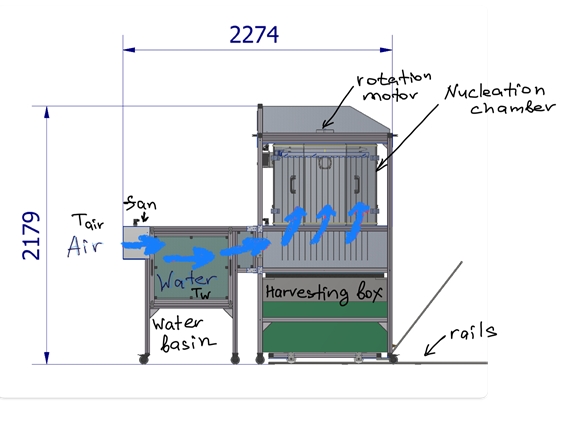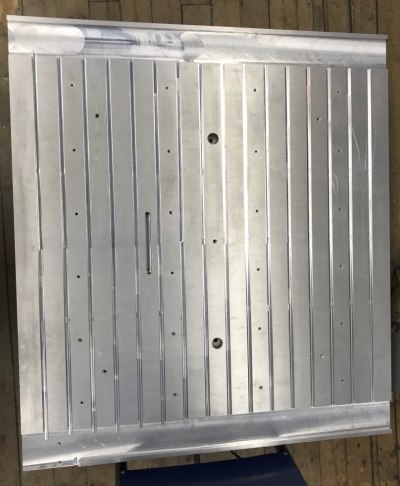Contact information:
Facility Manager: John Hulth, Head Engineer
Scientific Managers: Olga Silantyeva (Postdoctoral Fellow) and Robert Oscar David (Researcher)
Location: Sem Sælands vei 1
0371 OSLO
Norway
Instruments:
- The temperature controlled cold climate container is equiped with a termostat that can set the temperature between -40 and + 20 ℃.
- The cold climate laboratory and workshop is also equipped with an aluminum plate, which plate designed to accurately control the surface temperature of snow and/or soil, which is currently used in ongoing experiments.
- The SnowMaker machine: The SnowMaker is a modification of a machine described in Schleef et al. 2014. An improved machine to produce nature-identical snow in the laboratory, J. of Glaciology, V60, N219. doi: 10.3189/2014JoG13J118.
- In addition, the climate container is equipped with several field deployable instruments for conducting aerosol and precipitation measurements.
The temperature controlled facility may be equipped as desired for a range of research studies, for example: lamps to imitate sunlit conditions, fans for studies involving airflow on top of specimens, and other devices. Thus, facilitating research activities in snow hydrology, bioscience, ecology, meteorology/climatology and other related fields.
Description of services:
- An advanced facilty and work place for conducting temperature controlled experiments on snow processes both with artificial snow made by the SnowMaker or snow samples taken from the field.
- Other research possible in the temperature controlled climate container laboratory is on biological samples, freshwater and seawater, permafrost research, plant tolerance as well as emissivity studies of snow etc.
About the Climate Container and studies of snow
The Cold Climate Container is a modular temperature controlled laboratory facility which allows investigation of snow processes with nature-identical snow, produced using the SnowMaker within the facility or snow collected during field campaigns.

The SnowMaker in the lab is a modification of a machine described in Schleef et al. 2014. An improved machine to produce nature-identical snow in the laboratory, J. of Glaciology, V60, N219. doi: 10.3189/2014JoG13J118.
All of the snow study instruments in the lab are installed in a modular container. The container has two rooms, an operator room and a cold room. The cold room thermostat can set the temperature in the container between -40 and + 20 ℃.
In addition to the aforementioned SnowMaker, the cold room is equipped with an aluminum plate (see photo), which is designed to accurately control the surface temperature of snow and soil involved in the ongoing experiments. There is also the fluid circulation unit with two separate devices, which produces cooling liquid for the aluminum plate or other experimental setups.

The nature-identical snow produced by the SnowMaker can directly fall on the aluminum plate and with minimal disturbance be used in the experiments, for example studies of snow metamorphism, snow sublimation or melting, etc.
The workshop and laboratory can by appointment be used for research activities and/or to assist students at the Department of Geosciences.
Background and related research to the infrastructure
The Climate Container is a laboratory and workshop, which has its origin in the research group Land-ATmosphere Interactions in Cold Environments – LATICE and the Clouds, Climate and Economics Group at the University of Oslo. Both research groups are hosted by the Department of Geosciences, University of Oslo and most of the researchers comes from the Department of Geosciences, but also researchers from the Department of Informatics and The Natural History Museum at the University of Oslo participate in these two interdisciplinary groups.
The Cold Climate Container infrastructure has received its funding from The Research Council of Norway through two projects at the Dept. of Geosciences, UiO. The projects have been led by J. Burkhart (Project I) and T. Storelvmo and R.O. David (Project II).
Related link to the research and the infrastructure:
Land-ATmosphere Interactions in Cold Environments – LATICE
The LATICE-Flux Infrastructure Lab
Research projects at UiO affiliated to and using the lab:
Assessing impact of snow sublimation for hydropower production in Norway (SnowSub)
